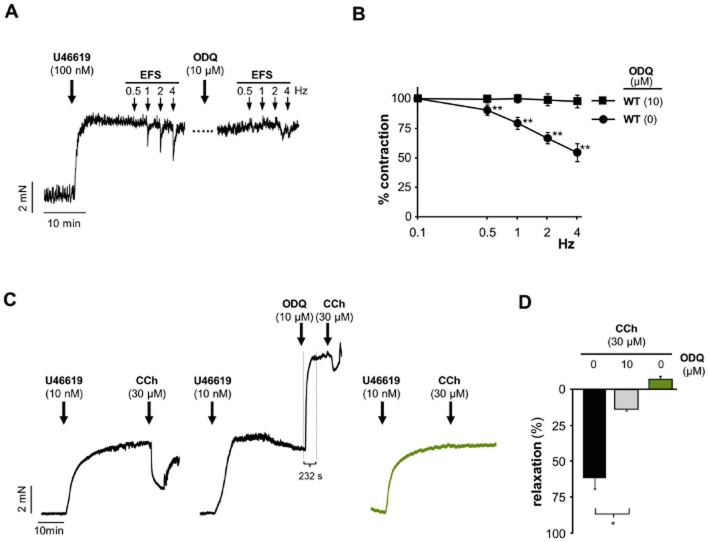Figure 6.
ODQ inhibition of relaxation by endogenously released NO. (A) Original traces and (B) statistical analysis of EFS-induced relaxation from pre-contracted (100 nM U46619) fundus strips from WT mice in the absence and presence of ODQ (10 μM). Prior to the addition of U46619, NANC conditions were obtained by adding atropine and guanethidine (1 μM, respectively). After the first EFS protocol ODQ was administered for 20 min with subsequent repetition of the EFS protocol. Data shown are mean ± SEM of n = 6 (**P < 0.01 compared to WT with ODQ). (C) Original traces of carbachol (CCh)-induced relaxation of aortic rings in the absence (WT and GCKO) and presence (WT) of ODQ (10 μM). Aortic rings were pre-contracted with 10 nM U46619. Approx. 30 min after addition of U46619, vehicle or ODQ were administered followed by a maximally effective concentration of CCh (30 μM). After application of ODQ, the onset of contraction was immediate and the contraction was complete after approximately 230 s indicating fast action of ODQ to block NO-GC. Note that these experiments were carried out in the absence of NOS inhibitors so that the stimulation of contraction induces counter-regulatory activation of eNOS. (D) Statistical analysis of carbachol (CCh)-induced relaxation of aortic rings in the absence (WT and GCKO) and presence (WT) of ODQ (10 μM). Data shown are mean ± SEM of n = 4 (WT) (*P < 0.005) and n = 3 (GCKO).

